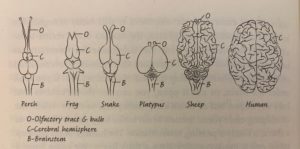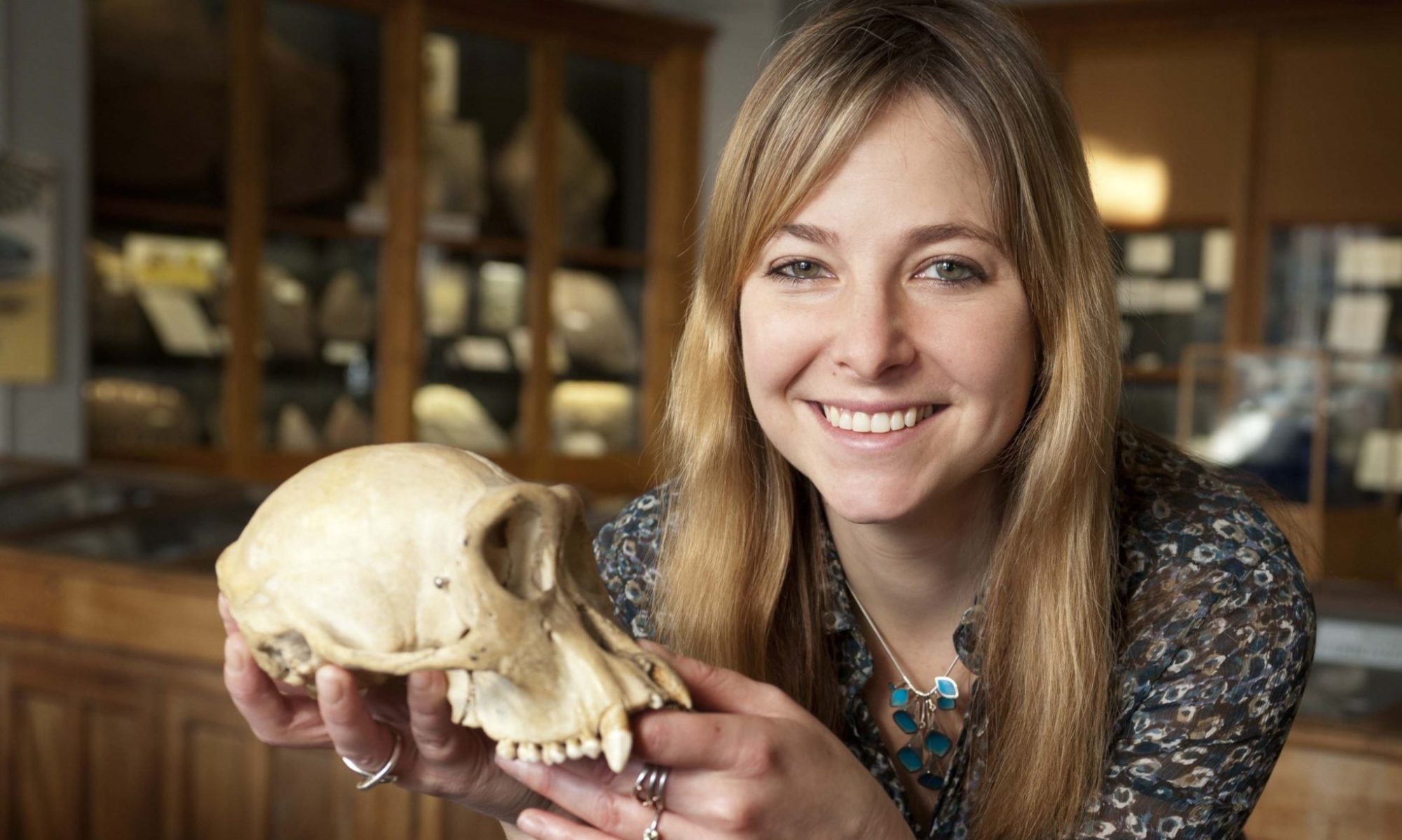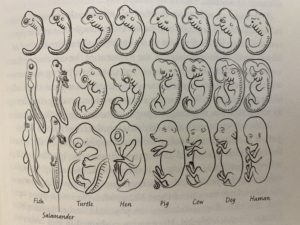Chapter Overview:
Roberts focuses her attention on the development of cephalization in chordates by focusing on evidence from embryology and evolutionary theory to tell the story of how we came to have centralized nervous systems. She then discusses the development and uniqueness of our own brains, what functions we share with other animals and in what ways we stand apart.
Chapter Summary:
Roberts begins by investigating the seemingly simple question of “Why do we have heads?”. She takes the narrative back to when heads first developed evolutionarily to point out their purpose. This discussion is started with an overview of the sea sponge and its strange lifecycle. The anatomy of its larvae which move and possess a notochord are similar to embryos of vertebrates. Though the theory that early vertebrates came from a sea sponge-like ancestor that stayed as a larva for its whole life is no longer accepted, the thought behind it helped form new hypotheses. We can recognize our evolutionary connectedness with lifeforms that seem as different from us as sea squirts through investigation of our beginnings as embryos.
Roberts then discusses the discovery of the Haikouella, a small chordate that dates back to 530 million years ago. The significance of this discovery is the fact that the Haikouella had a head. It is the one of the earliest recorded organisms with a centralized nervous system, simple though it is. The most closely related group to chordates is echinoderms, which include sea stars and sea urchins. Though their morphology is drastically different as adults, during their embryonic development they resemble us. Roberts suggests that some hints as to the origins of chordates lies in the morphology of hemichordates, which are closely related to both chordates and echinoderms. It seems likely, given the physiological and genetic evidence, that vertebrates developed from some type of swimming worm.
The development of unidirectional movement made having a centralized head more advantageous. Centralization of senses (and eventually processing structures for those sensory organs) followed. Roberts then describes the process of gastrulation and how it creates the structures we will rely on as adults from layers of cells. She then describes the process of gut development and the difference between protostomes (mouth first) and deuterostomes (mouth second). Though it is short-lived, the notochord is essential to our development as an embryo. After gastrulation and formation of the notochord, the neural tube develops. Then the neural tube at the anterior end of the embryo expands and develops into several different regions of the brain and eyes.
Roberts then discusses the human brain as it exists now, in its complexity and specialization. She describes the process of discovering that regions of the brain were specialized by location. First, she tells of Phineas Gage, a railroad worker whose brain injury created a very specific and notable pathology and began a new conceptualization of how location of the brain is specialized to a specific function. Then comes a discussion of the discovery of Wernicke and Broca’s areas by studying deficits of language in those who have experienced a localized brain injury. Primate brains, human brains in particular, are very flexible to the creation of connections based on stimulation from the environment which is one of the reasons humans have the incredible propensity for learning that we do.
Next, she describes mirror neurons which respond to seeing another making bodily motions. These neurons are thought to bely our ability to learn by watching and even our ability to feel empathy for another. They play a role in learning, though there is not strong evidence that they are functional in the brains of infants.

Humans have incredibly large brains for their bodies. Our prefrontal cortex, in particular, is incredibly developed. This area of the brain is responsible for skills like language, reasoning, planning, behavioral regulation and planning. Our enlarged brains allow us the capacity for Theory of Mind, the ability to think about what others or thinking. In its basic form, this allows us to understand that not everyone is thinking the same things that we are. Roberts then describes the incredible expansion of cranial capacity that took place over millions of years to leave us with our incredibly complex (and large) brains.

